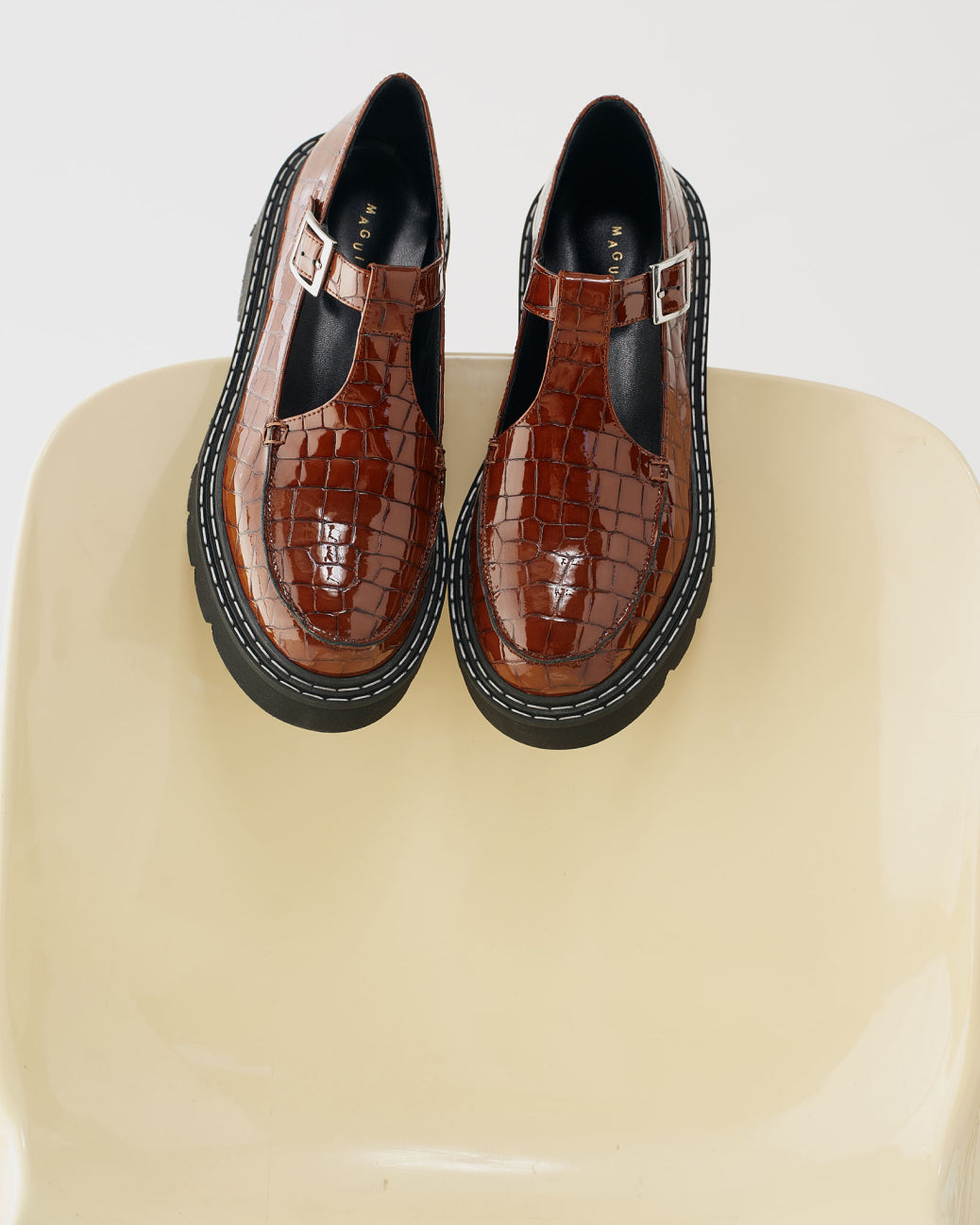Extra Collection made from deadstock leather

While visiting our factories, we noticed there's always extra leather left over after a production run. In the industry, this is called "deadstock" and for other, larger brands (who often produce in the same factories as us), there can be a lot!
Most of the time, it just goes to waste. But we had an idea!

Introducing the Extra Collection, a selection of our original designs made from deadstock leather. This means some of our favourite products, like our Neiva Mary Jane or the ever-popular Tavira, are available in some *very* limited-edition colours and leathers!

Why did you decide to use deadstock leather for this collection?
Myriam, our founder and designer, visits our manufacturers regularly to develop products and oversee production. She would always see this “deadstock” corner full of unused leather, and she had the idea of using it someday.
There are a few things we love about doing this.
- First: it reduces waste! Instead of ordering new material, we can make use of this extra material which, most of the time, ends up in the trash.
- The second thing we love about this: The exclusivity! Because we can produce in such small quantities, which is rare in our industry, we can have these highly limited runs with exclusive and unique materials!
- Finally: turnaround time. Because new material is not being ordered, we can drop new colours into our collections quickly and rapidly.
 Myriam, cofounder and designer of Maguire searching for leather.
Myriam, cofounder and designer of Maguire searching for leather.
But this also comes with challenges.
Because it is usually just waste, factories don’t keep an inventory of their deadstock. It’s not in their catalogue. So this means we need to travel in person to see what’s available, and dig through it all by hand! That’s what our design team did this past summer.
Secondly, it requires a good relationship with the manufacturer to convince them! Adding limited quantities of deadstock to production means more complex production and logistics for a manufacturer. But once we pitched them the idea, they quickly recognized its value of it. They just didn’t have the resources to manage it in-house.
Finally, on our end, we need to pay more in marketing costs (e.g. e-comm photos) knowing this won’t be a repeated colour, and that’s all right!

Where does deadstock leather come from, and where does it go?
The leftover leather known as deadstock is unfortunately common in factories. This is for two reasons: First, factories need to buy more material than needed in case of errors or imperfections in the leather itself. Second, sometimes a factory’s customers might change their minds on quantities or even cancel an order.
At Maguire, we take great pride in making sure we use all the leather we order in our factories. If we have to change a production order, we find new products in our next collection that will use that material.
However, not all of our competitors are this meticulous. What’s more: for a very large brand with large order volumes, a small percentage of extra material to them can actually be a considerable amount in reality.
The main reason why deadstock often goes to waste is that there’s simply not enough of it to cover a full production run. Additionally, the factory is usually so busy they don’t have time to inventory all the leftovers. Of course, leather is an organic material, so if left on the shelf for too long it will dry out or grow mould. Sadly, once this happens it can no longer be used and must be thrown away.

What are Maguire’s other concrete actions on sustainability?
We find it hard to use the term sustainable in the fashion industry because this is an industry that always encourages more consumption. That said, there are some actions that can be taken to reduce the impact of certain business practices.
- Transparent and Fair Prices - On each product page, you will find our production cost for one unit that determines our prices. By revealing our costs, you can see how much of the purchase price goes directly to the manufacturers and not intermediaries.
- Small batch production - We produce in small batches to minimize overstock and waste. We use waitlists to help us plan the right quantities in advance. We work seasonless and have products available all year round. Some styles have been with us for five years and counting! Customers can save up and buy when they are ready, and use the products for more than a season.
- Manufacturer profiles - We pull back the curtain on our factories because we are proud of our manufacturing partners and have nothing to hide. We personally visit all our factories and meet with owners and employees to ensure our values are reflected throughout our supply chain.
- No promotional sales - We don't build in regular promotions or end-of-season markdowns in our pricing model. This reduces impulse buys and gives customers the best possible price all year-round. We sell all our demo models and imperfects at or below cost during our semi-annual sample sales.
In a world full of greenwashing and sustainability marketing rhetoric, we hope this little bit of transparency was informative. 🙂